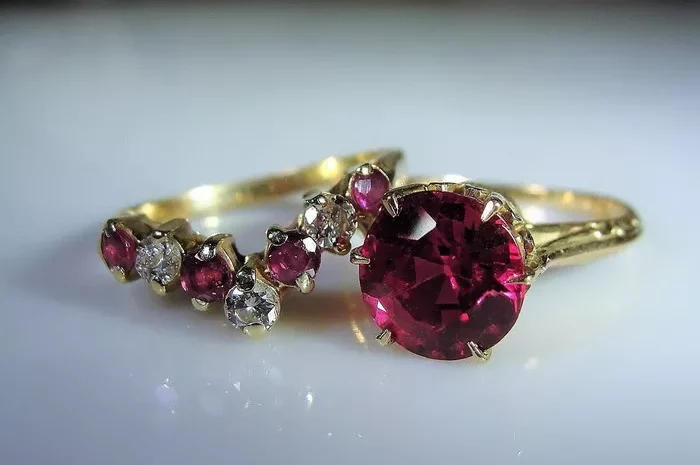Rubies, with their captivating crimson hue, have mesmerized humanity for centuries. Coveted for their beauty and symbolism, rubies hold a significant place in both history and modern society. However, not all rubies are created equal. In today’s market, one encounters both lab-created and natural rubies. Understanding the disparities between these two types is essential for gem enthusiasts, jewelers, and consumers alike. This article delves into the intricacies of lab-created and natural rubies, exploring their characteristics, differences, values, and identification tips.
Understanding Lab-Created Ruby
Lab-created rubies, also known as synthetic or cultured rubies, are produced in controlled laboratory environments. These gems are crafted using advanced techniques that mimic the natural processes that form rubies deep within the Earth’s crust. The primary method for creating lab-created rubies is the Verneuil process, wherein fine powders of aluminum oxide (corundum) and chromium oxide (a coloring agent) are melted and crystallized into synthetic ruby.
Understanding Natural Ruby
Natural rubies, on the other hand, are formed through geological processes over millions of years. They originate from the mineral corundum, which undergoes intense heat and pressure deep within the Earth’s mantle. As magma rises to the surface, it carries these rubies, which eventually become part of the Earth’s crust. Natural rubies are cherished for their rarity and unique characteristics shaped by nature’s forces.
Difference between Lab-Created Ruby and Natural Ruby
Origin: The most significant disparity between lab-created and natural rubies lies in their origin. Lab-created rubies are manufactured by humans in controlled environments, while natural rubies are formed naturally within the Earth.
Inclusions: Natural rubies often contain inclusions, tiny imperfections formed during their natural growth process. These inclusions can include rutile needles, fractures, or gas bubbles, which serve as identifying features. In contrast, lab-created rubies typically have fewer inclusions or none at all, as they are grown in controlled conditions.
Color Consistency: Lab-created rubies often exhibit a more uniform color compared to natural rubies, which can display variations and undertones due to their natural formation process.
Cost: Natural rubies command higher prices due to their rarity and perceived value. Lab-created rubies are generally more affordable, making them accessible alternatives for those seeking the beauty of rubies without the premium price tag.
Durability: Both lab-created and natural rubies possess excellent hardness and durability, suitable for everyday wear. However, natural rubies may have slight variations in toughness depending on their specific geological history.
Value and Cost
The value of a ruby is determined by various factors, including color, clarity, cut, and carat weight. Natural rubies with vivid hues, minimal inclusions, and excellent clarity command the highest prices in the market. In contrast, lab-created rubies are valued based on their quality of color and clarity, with affordability being a significant advantage for many buyers. While natural rubies may hold sentimental or investment value, lab-created rubies offer an attractive option for budget-conscious consumers or those seeking ethically sourced gemstones.
Identification Tips
Distinguishing between lab-created and natural rubies requires careful examination and expertise. Here are some key identification tips:
Inclusions: Natural rubies often contain characteristic inclusions, such as rutile needles or fingerprints, visible under magnification. Lab-created rubies may lack these natural inclusions or exhibit different types formed during the manufacturing process.
Fluorescence: Natural rubies may exhibit fluorescence under ultraviolet light, while lab-created rubies may show different fluorescence patterns or none at all.
Color Zoning: Natural rubies may display color zoning, where the color distribution varies within the gemstone. Lab-created rubies often have more consistent color distribution.
Certification: Seek certification from reputable gemological laboratories when purchasing rubies, ensuring authenticity and providing detailed information about the gemstone’s origin and characteristics.
Conclusion
In conclusion, the distinction between lab-created and natural rubies encompasses various factors, including origin, inclusions, color consistency, cost, and value. While natural rubies hold allure as rare and unique creations of nature, lab-created rubies offer affordability and consistency. Understanding these differences empowers consumers to make informed decisions when acquiring these precious gemstones, ensuring they find the perfect ruby to suit their preferences and budget.


